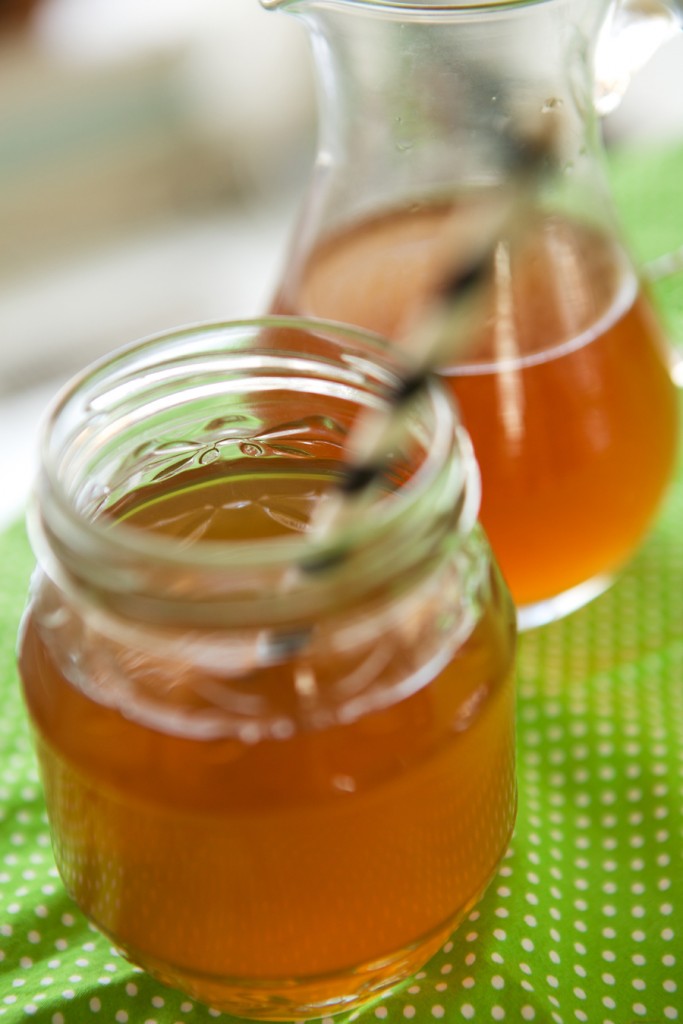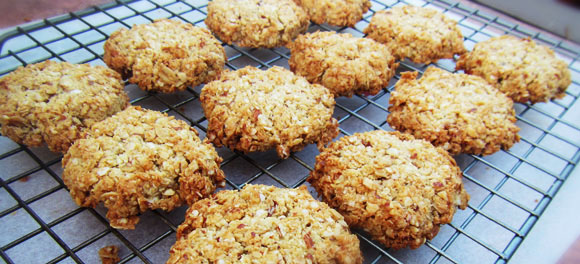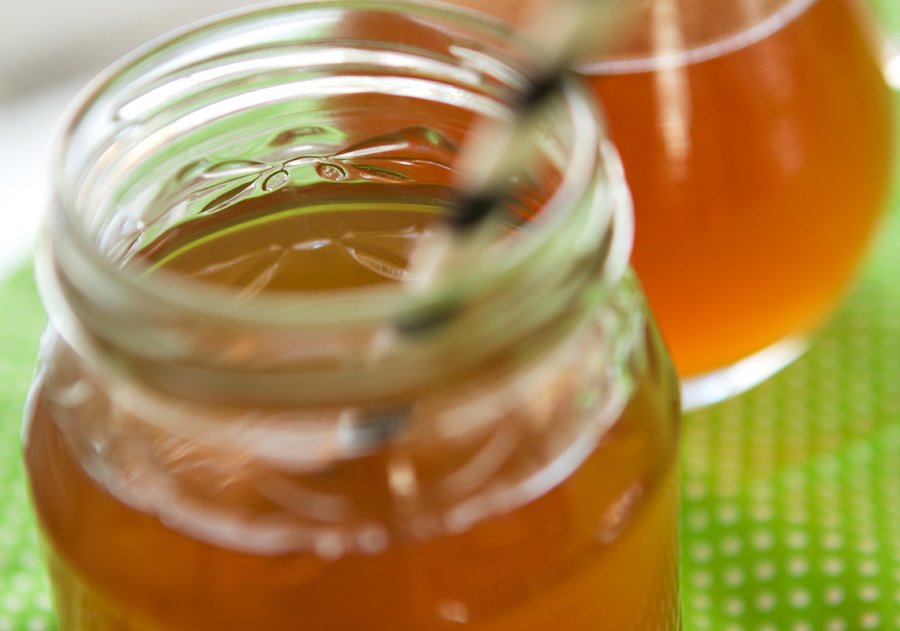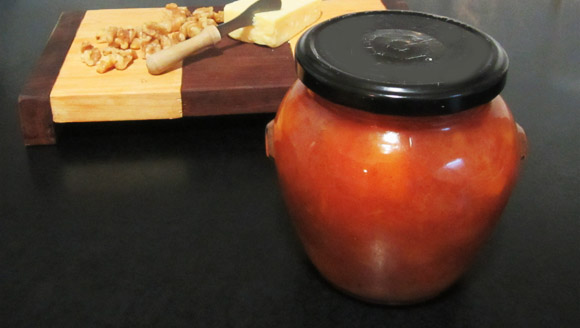Kombucha – recipe below
“I’m sorry, did you say it’s made from some kind of magic mushroom which you want me to ingest and supposedly it’s going to rid me of all my pain and woes …. is this legal?”
Recently I became the proud mum of a baby scoby (Symbiotic Culture of Bacteria and Yeast), the fungus that is required for the production of kombucha. Mmm delish..!
What is kombucha and why should you care?
Kombucha is a fermented drink made from sweetened black tea and the above-mentioned scoby. You can buy it for a pretty penny at health food stores but it’s super easy to make at home once you have obtained a scoby baby (from a farmers market or your best hippy friend!) and you will save a lot of money.
Taste:
Depending on how long you allow your brew to ferment it can taste like anything from delicious apple cider to a very sour fizzy vinegar. Brewing for 7-10 days will leave you will a tasty, yet effective drink. However, either way, it is incredible to gut health and repair.
Health benefits:
The way kombucha works is that it restores balance or equilibrium to the body so that it may heal itself. This means that the effects will differ from person to person. To some the effects will be significant, while others may just enjoy the taste as a healthy soft-drink alternative.
Every batch of homebrewed kombucha will contain a different number of enzymes, probiotics and certain amino acids and vitamins. However, each batch helps to benefit digestive functioning, aid liver detoxification and improve overall PH of the body. There in lies the magic of kombucha!
When all these areas are working efficiently the body is able to come back into balance.
Typical improvements:
- Increased immunity due to anti bacterial and antioxidant capacity.
- Improved metabolism and digestive health, relieving symptoms of IBS and other gastrointestinal disorders, due to probiotics and beneficial enzymes.
- Relieves candida and yeast overgrowth with the help of probiotics.
- Increased energy / reduced fatigue due to antioxidant content.
- Reduced headache due to natural analgesics.
- Reduced joint and muscle pain, including arthritis, due to glucosamine content.
- Improves detoxification and elimination, reducing pancreatic load and liver burden.
- Anti-carcinogenic due to improved detoxification.
- May also relieve fibromyalgia, depression and anxiety.

Recipe
You will need
- 1 3 litre capacity glass jar or bowl with a wide opening. Sterilize with boiling water and allow to air dry.
- a muslin cloth
- Elastic or string to secure the cloth over the jar
Ingredients
- 8 cups water
- 1 cup white or cane sugar is best. Don’t freak out you little health nerd you! See below for why this is essential*
- 4 black teabags
- 1 cup of kombucha starter
- 1 scoby (buy from a farmers market or get off an awesome hippy friend!)
Note: This is the basic recipe. As you become more comfortable with it you can start experimenting with different flavours. Try adding 1-2 teabags of your favourite herbal tea or a nob of grated fresh ginger.
Preparation
1. Bring the water to a boil in a large pot and stir in the cup of sugar to dissolve.
2. Once boiled, take it off the heat and add the tea bags. Leave it to brew for 15-20 minutes.
3. Remove the teabags and allow the brew to cool completely. This is very important as any heat may kill your poor scoby. If you have the time you may leave it to cool slowly, otherwise cool it rapidly over an ice bath in the sink.
4. Once cool add tea mixture to the sterilized jar. Pour in the starter kombucha.
5. With clean hands or tongs that have been sterilized with boiling water, carefully add your scoby. It may float, sink or be in between.
6. Cover with muslin and secure with string. Store in a dark place at room temperature. Leave for 7-10 days until your scoby grows another baby scoby on the surface.
Depending on the climate this process can vary in length. In temperamental Melbourne it takes about 10 days for a new scoby to form. Then it is ready for bottling! The longer you leave it the less sweet it will be and less sugar will remain.
Storage:
7. Pour into sterilized bottles and jars. Store the bottles in a cupboard rather than the fridge to maintain optimum fizz. This will also allow the fermentation process to continue. If you are not drinking it often just open the bottles and release the gas every few days so they don’t explode! If you prefer to drink it cold simply place a bottle in the fridge for a few hours or the night before you want to have it.
Passing on the kombucha love:
8. Both the new and old scoby can be used to make another batch. Just combine the scoby with 1 cup of kombucha in a sterilized jar and either pass on to a friend or store until you are ready to make another batch.
* The sugar is to feed you scoby and help your kombucha become big and strong so that you can reap the rewards. It is a necessary part of the fermentation process and will not work without it. Don’t fret, when fermentation is complete you will be left with approximately 1-2g sugar per cup of kombucha. If I put that in perspective for you 1 cup of fresh carrot juice has about 13g and fruit juices and soft drink and much higher still, and they don’t contain the good stuff! The longer you ferment the less sugar will remain. However, the flavour will become more sour the longer you wait.
Enjoy your magic mushrooms! Peace out man.
Photography by Yasemin Erdodu





